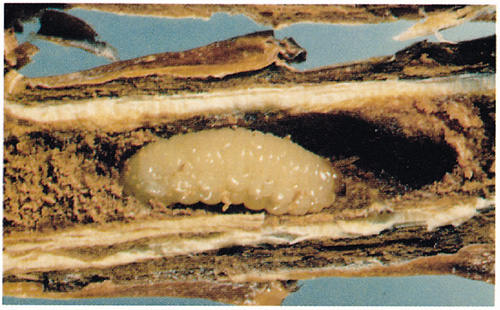Lodgepole pine terminal weevil
Pissodes terminalis
Adults lay eggs in the phloem at the bottom of the current leader. The eggs hatch and the larvae mine the phloem tissue, eventually killing the terminal shoot.
On this page
Description
Lodgepole terminal weevil is in the family Curculionidae (weevils or snout beetles) in the order Coleoptera. This weevil damages and often kills the tree leader, the terminal shoot’s new growth.
The lodgepole terminal weevil lays eggs in the newly expanding terminal shoot. In most areas in British Columbia, the lodgepole pine terminal weevil develops from egg to larvae in the first summer, and overwinter as larva in the terminal shoot. The next summer, they develop from larva to adults.
Lodgepole terminal weevil has high egg and larval mortality. Often no weevils emerge from an attacked terminal. Although egg laying by the lodgepole terminal weevil may not result in successful adult emergence, the terminal shoot is usually killed by the larvae mining.
Host tree species
The weevil attacks immature lodgepole pine throughout British Columbia, typically targeting young regenerating stands containing trees less than 10 meters in height
Damage symptoms
Weevil damage can cause a forked tree, growth losses due to leader damage and a reduction in wood quality.
Management
Active treatment for lodgepole terminal weevil is usually not required.
Identification images

Further reading
Read more about the lodgepole pine terminal weevil in the Field Guide to Forest Damage in B.C. (PDF, 6.6MB)
Contact information
Contact us if you have further questions about managed-stand pests and how they are controlled in B.C.
